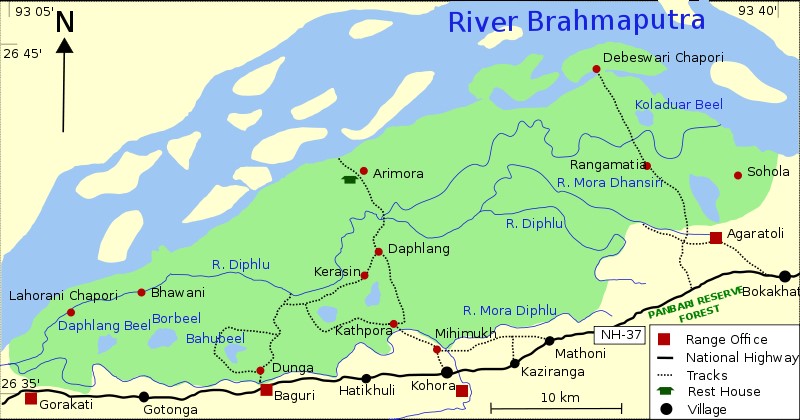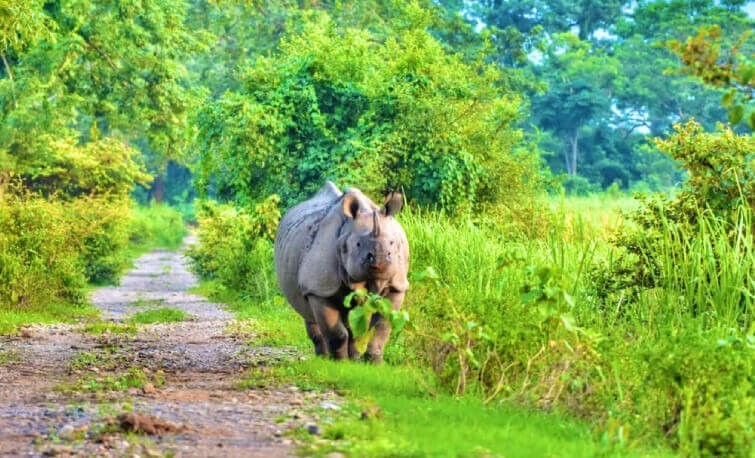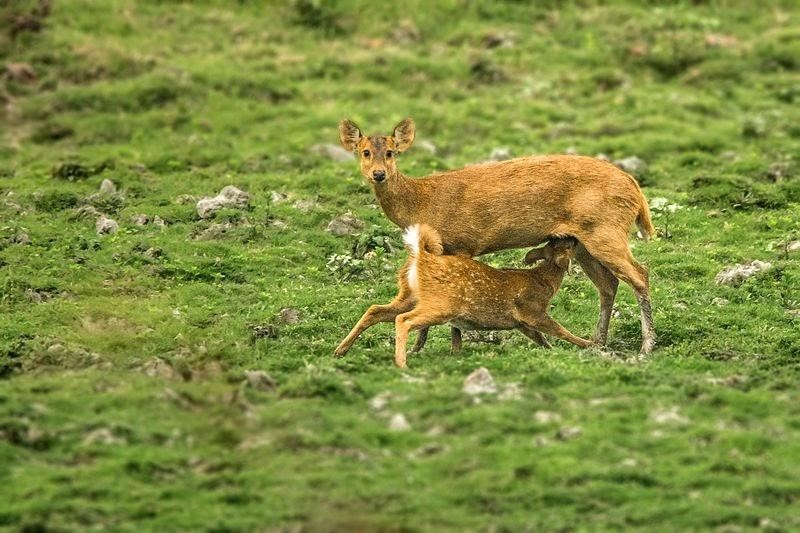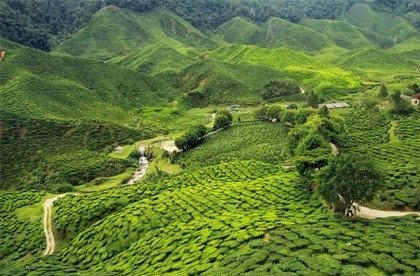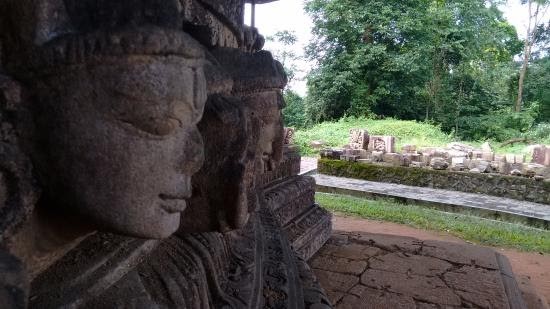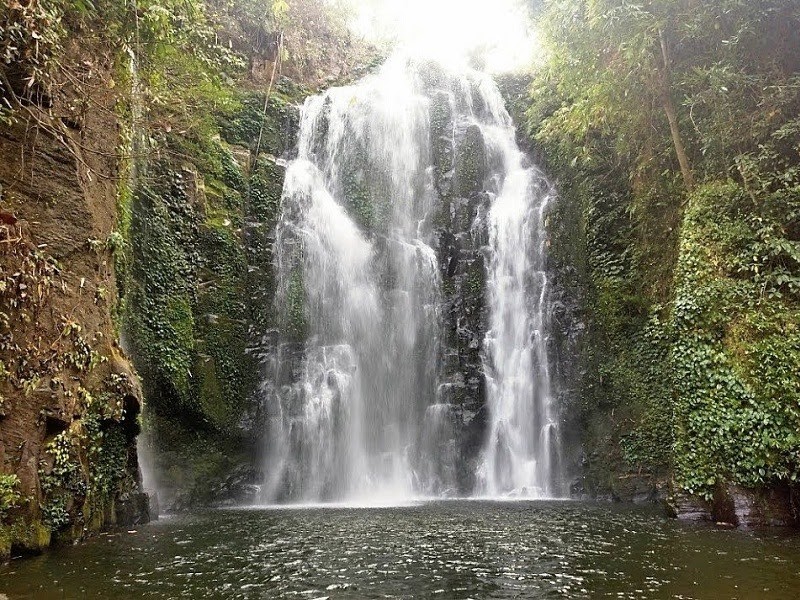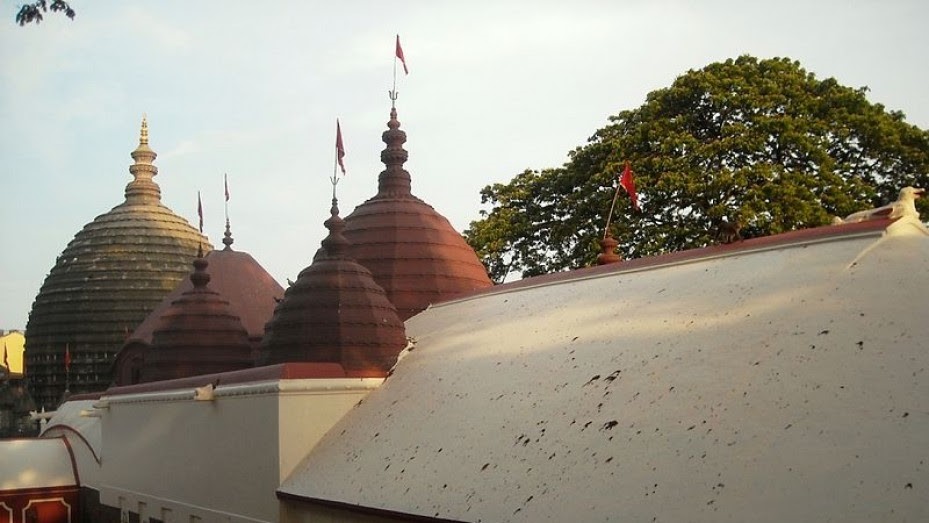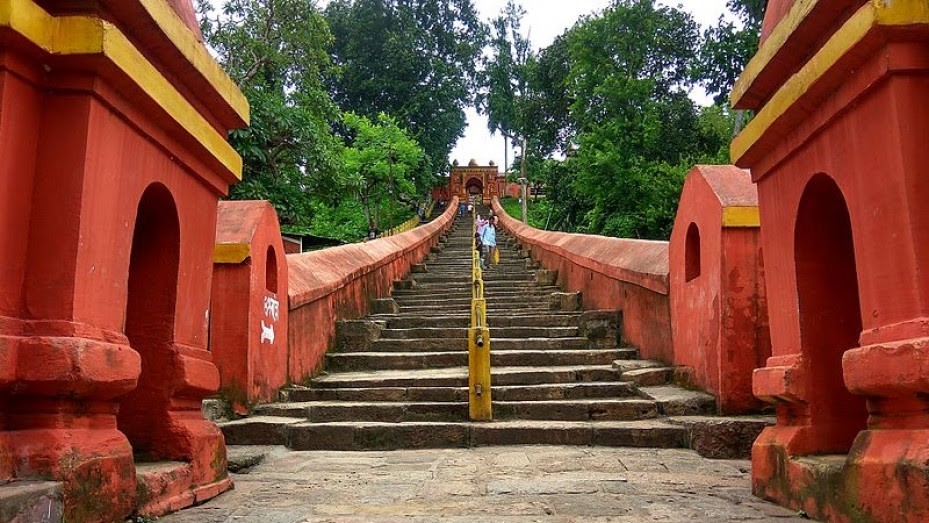Iconic Tourist Site: Kaziranga
Blogs Home
- 07 Jun 2022
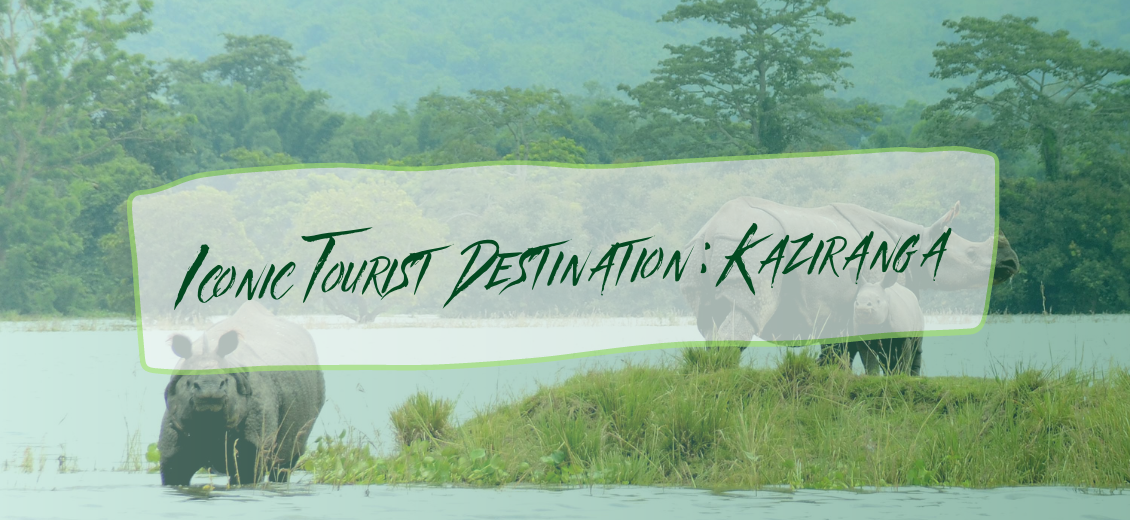
About Kaziranga
The Kaziranga national park is located in Assam, at a distance of 194 km from Guwahati. This national park is known to be a world heritage site and is also one of the finest wildlife sanctuaries in India. The famous one-horned rhinoceros is the most important protected species in this wildlife sanctuary. Two-third of the world’s rhinoceroses are found in Kaziranga. Kaziranga was also designated a tiger reserve in 2006.
History of Kaziranga
Kaziranga was established in the year 1905. The total area of the wildlife reserve was initially around 232 square km. After three years, the entire area of the wildlife sanctuary was extended by 152 sq km carving its way along the banks of the river Brahmaputra. In the year 1908, Kaziranga was declared as the reserve forest, which happened on the recommendation of Mary Curzon. The park is located on the edge of the Eastern Himalayas along with three hotspots – Sonitpur, Nagaon and Golaghat district. In 1916, it was made into a game sanctuary called The Kaziranga Game Sanctuary. In the year 1938, hunting was banned in this area and only visitors were allowed to enter the park.
Later in the year 1954, the government of Assam passed a bill, known as the Assam Rhinoceros Bill. It was laid to prevent poaching of rhinoceros in the area. According to the IUCN declaration, the protection of this vulnerable species is a mandatory action. After 14 years, in the year 1968, the government of the state passed another act called The Assam National Park Act of 1968. With the passing of this act, Kaziranga became a designated national park. Eventually, in the year 1985, Kaziranga was declared a World Heritage Site by UNESCO.
According to the article published by the Press Information Bureau, Government of India in 2017, Kaziranga National Park is popular for the Big Five (animals) namely:
- The Rhinoceros, which are 2401 in number
- According to a recent survey, in 2022 the number has increased to 2613
- Tigers with a count of 111
- 1165 Elephants
- Asiatic Wild Buffalo
- The Eastern Swamp Deer that are 1,148 in number.
This is the reason why this national park is known to be one of the best destinations for wildlife in the country.
Geography & Attractions of Kaziranga
The entire length of the national park is close to 40 km in length and 13 km in breadth. Kaziranga is home to around 55 species. Some of them are Indian wild boar, Fishing cat, Capped Langur, Indian leopard, Hog deer, Sloth bear, Swamp deer, Chinese Pangolin, Golden Jackal, Indian Pangolin, Bengal Fox, King Cobra, Bengal Cobra, Rock Python and many more. Since Kaziranga houses more than 500 species of migratory and endemic birds, the Birdlife International for the conservation of avifaunal species declared it as an important bird area. Kaziranga hosts around 26 species that belong to the endangered category. Considering the habitat, there are 42 fish species, 60 reptile species, nearly 24 species belonging to amphibians, 440 species of plants and 491 species of butterflies that form the flora and fauna family of Kaziranga national park.
The spread of the Kaziranga is around the mighty river of Brahmaputra. As a result of which, there are lots of lakes, swamps, tall elephant grass and flat grasslands that are a part of this beautiful park. The annual rainfall ranges at 2220 mm. During the monsoon season between the months of July and August, the water level of the mighty Brahmaputra rises high and as a result of this, it submerges with the western part of Bagori. Simultaneously, all the animals then migrate towards the forest area of Karbi.
Iconic Tourist Site: Kaziranga
The Central government of India has now declared that Kaziranga will range amongst the 17 places that the government has selected under the Iconic Tourist Sites of India. The Union Minister of India, Prahlad Singh Patel also mentioned that the site will be developed in such a manner that the entire focus will be on connectivity. Along with connectivity, the focus will also be on creating a great experience for the tourists visiting the national park. With the aim to make it an iconic tourist site, the ministry has focused on the development of the region and has welcomed help from Assamese locals. There are also many companies that are ready to invest in the enhancement of the area. Here are a few places that make Kaziranga an important iconic tourist site:
Places to Visit in Kaziranga
1. Panbari Reserve Forest
Panbari Reserve Forest is located close to Kaziranga National Park. This reserve forest lies in the district of Golaghat. One can see some non-native species like the great Indian hornbill, the crested goshawk, and many more. This forest occupies an area of 10 sq km. Panbari reserve forest located in the proximity of the park compliments its beauty. There are a number of rare bird species found in the area such as speckled Piculet, Pied Falconet, Crow Billed Drongo and a few others can be easily spotted here.
2. Tea Gardens
These gardens are the pride of Assam. The tea of Assam is famous across the world. While visiting the Kaziranga National Park, tourists must also take out some time to visit the tea gardens located nearby. The beautiful sight of lush green bushes in the hills makes it a must-visit destination. Assam is globally known for its amazing tea gardens and its massive tea production. Located very close to Kaziranga, the Numaligarh tea estate adds to the charm of the place. One can have a beautiful view of the tea gardens from Kaziranga.
3. Deoparbat Ruins
Deoparbat Ruins, also known as the Kaziranga Deoparbat Ruins are at a distance of 5 km from the Numaligarh located in the district of Golaghat. The ruins are close to the national park. These ruins are also known as the Deopahar hills or the two hills. An ancient temple and broken statues are scattered all around the temple. These broken statues depict the history of this beautiful temple. Climbing the Deoparbat ruins can be a task for travellers, especially during a hot summer day. But once you reach the top of the ruins, the sight casts an enchanting spell with its mesmerizing view. Tourists also get to see the sight of Numaligarh tea estate once they reach the top of the ruins. Along with this, one can also see the beautiful Karbi Anglong hills from the top.
4. Kakochang Waterfalls
These waterfalls are located 13 km away from Bokakhat which is within the district of Golaghat in Assam. This stunning waterfall is a beautiful creation of nature and a treat to the eyes of the visitors. Between the coffee and the rubber plantations, Kakochang Waterfalls beautifully makes the entire scenery magnificent. It is also a very popular picnic spot for visitors as well as locals. A lot of space can be seen around the waterfalls where the visitor can enjoy some family time. The beautiful ruins of Numaligarh that hold great archaeological value can be easily seen from Kakochang Waterfalls.
5. Kalyani Mandir
This mandir is located in Golaghat district, in an area called Dipota. The area of Dipota comes under Helem Revenue Circle. Dedicated to a goddess called Kalyani, this temple is known to hold a small story behind it. It is said that there was a king called Arimatta who had built this temple and dedicated this to the goddess Kalyani. Goddess Kalyani is a form of Shakti, which is a significant form of Goddess Durga. Although the architecture of the temple is quite simple, it resembles a typical Namghar of Assam. The devotees visit this temple on a regular basis. As the temple is located near Kaziranga National Park, a lot of visitors prefer visiting this temple too.
6. Madhabdev Thaan
This temple is the birth place of Sri Madhabdev. He was the most polite disciple of Srimanta Sankardeva. Also known as Leteku Pukhuri, the temple is located near Borbali village, which comes under the district of Lakhimpur of Assam. Sri Madhabdev was born in the year 1489 and is now remembered as a significant part of the Vaishnav culture in Assam. After the death of Srimanta Sankardeva, Sri Madhabdev became the religious guru of the Vaishnavites of Assam. He is also known for giving Borgeets, which are also known as the hymns that are recited and sung in Assam even today. The temple is known to have a great collection of books, and manuscripts, from the days of Sri Madhabdev and tourists are free to indulge themselves in his beautiful collection.
7. Petua-Gosani Thaan
This is also amongst the oldest temples in this region. The temple was dedicated to Goddess Kali, making it one of the ancient temples from history where Kali is still worshipped. They pray to Goddess Kali as Kesaikhaiti. There is an interesting story associated with this temple as well. As the Britishers were struggling to take control over the region of Lakhimpur, they discovered this temple. It is also said that the people of Daphala tribe, who currently reside in the state of Arunachal Pradesh, used to visit this temple for religious purposes. Every year, locals and visitors across the world come and offer their services to the Goddess Kali.
8. Radha Pukhuri
Radha Pukhuri and Narayanapur are some of the beautiful places located in the precincts of Kaziranga National Park that one can visit during their trip. It is located at Sawkuchi village. As of now, this tank is used by the fisheries department of the state of Assam and this is where they breed fishes and feed them. This tank was built in the year between 1400 to 1500 AD. It was built by a famous king named Lakshminarayan and it was then that he named the tank after his wife – Radha. There are some historians who say that this tank was built by Queen Sarbeswari. This tank was also known as Adhapukhuri (means half construction), for a very long time. Later, the name was changed back to its original name – Radha Pukhuri. This place is located around 34 km away from Kaziranga National Park.
9. Bhatoukuchi Thaan
It is a very small temple that is located near Dholpur, in Kathani village. This temple is situated in the Lakhimpur district. It is said that the temple was built by Keshabsaran Bhatoukuchia Atta, and hence, the name of the temple is Bhatoukuchi Thaan. According to an ancient text of Kathagurucharit, Keshabsaran was born in the year 1605 and died in the year 1665. People in large numbers visit this temple every year and come to seek blessings from the higher power. Not only locals, but this temple also attracts people from all over the world. This temple, located in the middle of tea gardens and the forest, makes it a perfect setting for both visitors as well as the locals visiting the place. The architecture of this temple will give you a glimpse of the craftsmanship of the people working in Assam.
In its initial days, Kaziranga encountered frequent floods which continue till today, the flood in 2021 submerged around 70 percent of the land and forced animals to shift to higher grounds. However, it still is one of the most prominent lands for animals and birds in the region. Being listed in the list of Iconic Tourist Destinations, the National park is definitely going to prosper more than in previous years in future.

Shrishti Gupta
https://www.nativeplanet.com/kaziranga/attractions/#petua-gosani-thaan
https://www.india.com/travel/kaziranga-national-park/
https://nenow.in/environment/kaziranga-amongst-indias-17-iconic-tourist-sites-centre.html

